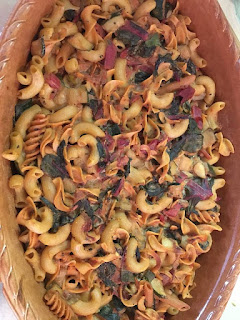The success of the feta and my tried-and-true tofu cream “uncheese” made me want to try and recreate another cheese favorite – halloumi, the gummy, salty cheese you can bake or grill to perfection. Turns out someone has already thought about this – the awesome Nada from One Arab Vegan has a great recipe! I made a few modifications to prepare it as follows:
Half a block of extra firm tofu–Hodo Soy extra-firm has the perfect consistency for this dish. It’s firm and springy, just like the cheese, and requires very little squeezing.
1-2 tbsp freshly squeezed lemon juice
1-2 tsp of sea salt (halloumi is a fairly salty cheese, but we found it a bit too salty for our taste, though after grilling it the flavors worked really well)
2 tbsp nutritional yeast
1/2 tsp dried oregano (Nada’s original recipe calls for dried mint, which would’ve been preferable, but oregano was a tasty substitute)
1/2 tbsp olive oil
Freshly ground black pepper
Press the tofu (though not essential for Hodo Soy). Mix up all other ingredients in a little bowl into a thick, pasty marinade. Slice tofu to 1/8-1/4 inch slices. Layer the slices in a shallow dish and rub the marinade on both sides of each slice. Leave for 20 mins to absorb the flavors.
Nada uses a waffle iron to cook them, but I don’t have one. Fortunately, years ago, before I knew anything about cooking, my mom gifted me this amazing grilling pan, and I suspect any pan or griddle will do. Grill the slices for about 5 mins on each side, and you’re good to go.
Another idea I had was to do cubes in lieu of slices and put them on mediterranean-style skewers with mushrooms and tomatoes. I’ll do that for my next bbq party!








